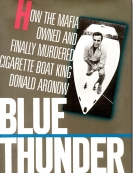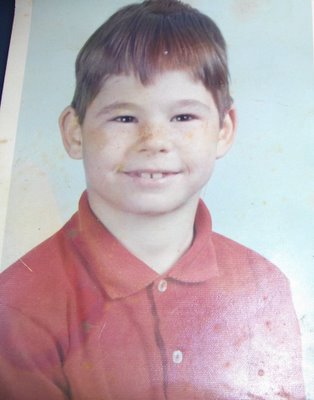TTHE MOST SUCCESSFUL FASCISTS OF ALL TIME CONTINUED......
BUSHFELLAS "I don't think we have had something of this scope, arrogance and sheer venality in our lifetimes," wrote Norman Ornstein of the conservative American Enterprise Institute. "It is building to an explosion, one that could create immense collateral damage within Congress and in coming elections." | |
| *World Exclusive* | |
| As three men—Anthony ‘Big Tony’ Moscatiello, Anthony ‘Little Tony’ Ferrari, and James ‘Pudgy Fiorillo— pled not guilty in court this week, the MadCowMorningNews has discovered new details in the investigation into the 4-year old slaying of SunCruz casino ship owner Gus Boulis. A company which received over $100,000 in suspicious payments before the murder from Adam Kidan, we have learned, is owned by the family of long-time U.S. Senator from Florida Claude Pepper, now deceased, whose ties to illegal gambling there go back to the 1920’s. “Even as White House aides Karl Rove and Scooter Libby dominated the headlines,” read a typical analysis last week, “according to many observers Jack Abramoff remains the Republican Party's most dangerous problem.” Here’s why: Kidan wrote a check for the hit. A dunsky for the ages During the months before Boulis was gunned down, big money went to a mysterious Miami Beach company, and the daughter of a close associate of Gambino crime boss John Gotti. Kidan sent checks totaling $145,000 to the daughter of Gambino hood Anthony Moscatiello, one of the three men charged so far in the gangland-style execution in Fort Lauderdale, and checks totaling $105,000 to ‘Moon Over Miami Beach.’ An officer in the company, James Ferrari, has been charged in the case. “Moon Over Miami Beach” is “a company whose business remains unclear,” reported the Fort Lauderdale Sun-Sentinel. “Anthony Ferrari runs Moon Over Miami Beach, a company just off the Lincoln Road Mall that never seems to be open for business,” reported Miami’s Channel 10 NEWS. “And Ferrari refuses to even say what business the company does.” | |
| Moon over Miami Beach sound as phony as some of Abramoff’s other dummy front companies. We recalled the "premiere international think tank" he set up called the American International Center, through which rivers of cash were laundered.
"Want to head an international corporation?" “Want to be head of an international corporation?" Grosh told an incredulous Senate committee hearing he was asked. "I was like, ‘sure.’ It was a hard one to turn down. I asked him what I had to do, and he said 'Nothing.’ “That sounded pretty good to me." Abramoff charged exorbitant fees for work he didn't do, and set up fake charities to shelter the ill-gotten gains. There were phony grass-roots Christian groups. Phony billing statements. And nonprofits with phony purposes. When we took a closer look at “Moon over Miami Beach” we discovered the previously undisclosed gambling associations of the firms’ other two officers, Frank and Thomas Pepper. News accounts identified Frank Pepper as “the 77-year old founder of one of Miami's oldest real estate companies,” and Thomas Pepper as his nephew, a friend of Ferrari and one of four men who received $10,000 in Sun Cruz casino chips. In a startling twist, we have learned that the Pepper family—one of the Miami families dating back to the boom time 1920s—has a rich history of involvement in gambling in South Florida that seems germane today in a murder investigation of a man who owned floating casinos. For more than 30 years, reported the June 30, 1991 St. Petersburg Times, the FBI and its legendary director J. Edgar Hoover collected details about Claude Pepper in an effort to link him to corruption. The FBI’s suspicion of Pepper may have owed something to the “considerable notoriety” he enjoyed because of his public objections to FBI wiretapping. A field agent in the FBI's Washington office once wrote Hoover that he was surprised that Pepper had attacked the bureau because agents there had once recovered a diamond bracelet of Mrs. Pepper's which she lost in a Washington taxicab. "I shall always be most grateful to you and the Federal Bureau of Investigation for the exceedingly kind and efficient service which you rendered to me and to Mrs. Pepper," Pepper wrote Hoover in a thank-you note. At the bottom of the note, reported the St Petersburg Times story, Hoover personally added his own sentiment: "Pepper has to serve his masters, the Florida politicians and criminals." Besides looking at Pepper's ties to left-wing organizations, the paper reported, the FBI also questioned whether Pepper’s nephew was running a gambling operation. In 1986, Pepper formed the not-for-profit Mildred and Claude Pepper Foundation, to “promote policies and programs which will improve health, provide economic opportunity and contribute to social justice for all Americans,” according to their literature. A dandy ambition. But despite its lofty goals, the foundation carried on with a very modest budget, until after Pepper's death at age 89, when the financial picture turned unexpectedly rosy... The U.S. Congress appropriated $ 10-million for the foundation from—are you ready for this?—the Department of Defense budget, “a direct and unrestricted grant to support the purposes of the foundation and to serve as a memorial to Pepper.” "I've never heard of government money used to create a foundation like that,” said Among the creative ways the foundation has found to spend money: $10,000 to the Association of Jesuit Colleges and Universities in El Salvador, during the height of the Contra unpleasantness. We’re sure we could find more. If the various Abramoff scandals are the brewing scandals Republicans fear most, what may be keeping Abramoff himself up late at night, we suspect, is the murder investigation now grinding forward in Fort Lauderdale, FL. What makes this a candidate for most explosive scandal (in a Dramatic Category) since Watergate? First, because Jack Abramoff and his friends are the players in the conservative revolution that took over Congress, the White House, and the lobbying industry... Second, because Abramoff has been charged with fraud in connection with a gambling ship deal in Florida which ended in a gangland-style killing of the man Abramoff is alleged to have defrauded... Congressional Quarterly called the Abramoff-DeLay scandal “The Slow Decline of a GOP “Godfather.’” How much of this isn’t in jest? Have we truly become what much of the rest of the world sees us as: Gangster America? Anthony Ferrari was first identified in print as a suspect four years ago, in August of 2001. The basic facts in the Boulis murder have been known to investigators since that time. The FBI’s interest in Claude Pepper’s family associations with illegal gambling in South Florida go back six decades. They were writing memos about it in 1937. With a history that long, and that hidden... the discovery of assorted political murders is not exactly a “stop the presses!” moment. Especially coming so soon after George W Bush took power, Boulis’ very visible murder would have raised concerns that it might signal a big shake-up in the gambling industry hierarchy. Details of the “deep politics” behind an industry as important and lucrative as unregulated gambling are of keen interest to anyone who wants to understand how power works in America. This must be why they are being doled out like flu shots in the middle of a pandemic. They are obviously considered highly-sensitive... need to know sensitive, even. Imagine that. Could this be an answer of sorts to one of the biggest mysteries in the case: why have police waited so long to charge people for the crime? Investigators strongly suspected that Boulis’ cold-blooded murder was related to the dead man’s riches—and his businesses. Boulis’ most profitable business venture was SunCruz Casinos, which he had recently and reluctantly sold to a Washington DC investor group headed by Republican super-lobbyist Jack Abramoff, and “fronted” by a buddy of Abramoff’s from their College Republican days, a disbarred attorney and “businessman” named Adam Kidan. The sale price was $147 million. An hour before a gunman killed Gus Boulis, a local developer and two prominent Hollywood, FL. lawyers had attempted to persuade Boulis to sell his interest in a big Hollywood waterfront hotel project. The controversy around the sale of Boulis' SunCruz casino boat empire made Boulis too hot for the public to accept as a partner on a 20-story hotel project on city-owned beachfront land, they told him. After almost a decade of very public wheeling and dealing, Boulis had suddenly become persona non grata. But one brutal murder does not a Republican Thuggee gang make. We needed more examples. They were, alas, almost too easily found... There’s the gangland murder of Kidan’s own mother, for example. On Feb. 18, 1993, Kidan's mother, Judy Shemtov, 46, was shot in the head and killed after answering the door of their posh Richmond Hill home. The motive of that slaying was a mystery until Chris Paciello, Miami Beach's leading club impresario and sometime boyfriend of Madonna, pleaded guilty to a racketeering charge and turned government informant. Paciello testified that he was the getaway driver for a crew from the Bonanno crime family who went to the house to rob Kidan's stepfather of $200,000 they had heard he kept in a safe in the house. When Shemtov answered the door, two young men wearing baseball caps and jeans entered the foyer of her Queens home, said her husband, Kidan’s step-father. One of the crew accidentally shot her. “A bullet tore through Judy's left cheek. Her small body flew into the air and slammed backward into the foyer, then dropped to the floor. Blood splattered all over,” wrote the tabloid New York Daily News on April 14, 2002, under a headline reading “RISE AND FALL OF A PLAYBOY MOBSTER.” Calandra looked at Tommy Reynolds. "Let's make this one to go," he said, borrowing the line from his favorite movie "Goodfellas." The two men fled. Here’s a truly horrible thought: Kidan is suspected by some of being responsible for his own mother’s death, by telling the robbery crew, who knew, where they kept the cash. Boulis’s murder cast a pall of fear over the people who knew him, said the local paper, the Sun-Sentinel. What they meant was...people are afraid to talk. At his company, Atlantia staffers remained silent, referring calls to a public relations agency. Even police were having difficulty getting some people to talk. ”There are a lot of people who aren't talking for reasons of personal safety," said Fort Lauderdale Police Detective Mike Reed. Here’s one you may have heard about: “Boulis was murdered in the exact same way as Don Aronow, Bush’s other partner,” he stated. Bush’s other partner? Donald Aronow, 59, self-made millionaire; acknowledged guru of the offshore powerboat set, rich and handsome deal-doer adored by friends and family... and killed on Northeast 188th Street in broad daylight by a stranger in a dark Lincoln Town Car who calmly shot Aronow in the chest, blasting his way down to the groin. Here’s one you may not have, from the White House Spy Scandal we are hearing so little about. Two factions are battling for control of the Philippines. Abramoff, of course, has “a dog in that hunt.” Abramoff’s clients sent a man named Michael Aquino to the U.S. to lay low for a while. He was arrested with the Marine at the White House who had been feeding him classified material. Here’s an example of why he's laying low: Edgar Bentain was a man who released a video clip during the Presidential campaign there showing then-Philippine Vice President Joseph Estrada and a notorious gambler playing high-stakes baccarat at the Heritage Hotel casino. This was not pleasing to Estrada, an ally of Imelda Marcos and Abramoff’s. Betain disappeared without a trace. Nothing had not been seen nor heard of him since. Then someone confessed that they’d seen Bentain: in a drum. "We were brought to a bridge near Bacolor, where we saw Bentain inside a drum. We could still see his head but the rest of his body was already buried under cement," said the man’s statement to police. “Bentain was crying and begging for his life.” The statement quoted Aquino as telling Bentain: "Masyado ka kasing pakialamero at iyan ang bagay sa iyo (You deserve this because you mind other people's business too much)!" Bentain was encased alive in cement. Philippine NBI agents were said to be searching for a metal drum near the bridge. The players and politicians so desperately distancing themselves from Abramoff would prefer that we think of him as some small-time hustler, a fringe sleaze ball who crawled out of the shadows. He wasn't. He was a big-league hustler and a mainstream sleaze ball. And he was all theirs. We’re pretty sure that few will miss the rat-faced weasels about to be sent to jail. Shakespeare, as acute an observer of the human condition as has ever lived, according to some, famously wrote that “Murder will out.” We shall see. | |
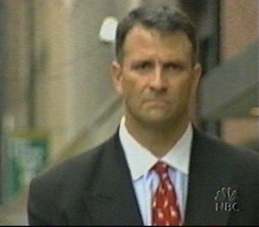 It is a startling twist to the case, seeming to indicate, at a minimum, that the surface perturbation in Florida’s ga
It is a startling twist to the case, seeming to indicate, at a minimum, that the surface perturbation in Florida’s ga mbling world reflected in Boulis’ murder are the result of deeper tectonic shifts which the Evening News is reluctant to acknowledge or explain.
mbling world reflected in Boulis’ murder are the result of deeper tectonic shifts which the Evening News is reluctant to acknowledge or explain.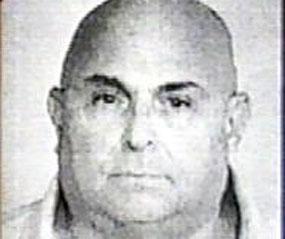 After failing to pay for his purchase of Boulis’ SunCruz casino ship empire, Kidan added injury to insult, investigators now suspect, by using Boulis’ purloined company to pay for his own death.
After failing to pay for his purchase of Boulis’ SunCruz casino ship empire, Kidan added injury to insult, investigators now suspect, by using Boulis’ purloined company to pay for his own death. 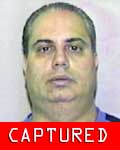
 FBI files indicated that Pepper "is suspected of receiving graft through various political manipulations and maneuvers in the state of Florida, although no positive evidence has ever been offered in this request."
FBI files indicated that Pepper "is suspected of receiving graft through various political manipulations and maneuvers in the state of Florida, although no positive evidence has ever been offered in this request." 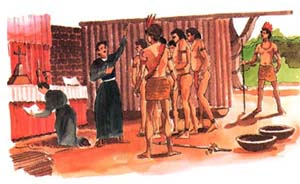 Robert Bothwell, executive director of the National Committee for Responsive Philanthropy in Washington.
Robert Bothwell, executive director of the National Committee for Responsive Philanthropy in Washington.  And third... because The Washington Post (and practically everyone else writing about it) can’t resist describing it as a “gangland-style hit straight out of “Goodfellas.”
And third... because The Washington Post (and practically everyone else writing about it) can’t resist describing it as a “gangland-style hit straight out of “Goodfellas.” 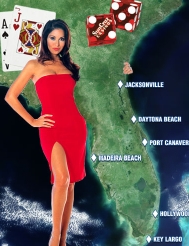
 If you don’t recall, the Thuggees were a well-organized confederacy of professional assassins, an Indian cult sometimes described as the world's first mafia. They practiced large-scale robbery and murder of travelers between the 13th to the 19th centuries. Members were known as Thugs.
If you don’t recall, the Thuggees were a well-organized confederacy of professional assassins, an Indian cult sometimes described as the world's first mafia. They practiced large-scale robbery and murder of travelers between the 13th to the 19th centuries. Members were known as Thugs. 